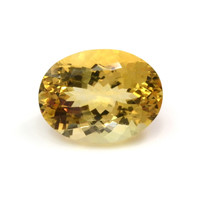Inclusions of Citrine
Inclusions in gemstones, particularly Inclusions of Citrine, are natural features that occur within these beautiful stones. Often regarded as nature’s fingerprints, they provide each gemstone with a unique character. Understanding the various types of inclusions, including those in Citrine, can enhance appreciation for gemstones and assist in their identification and valuation. Here’s a detailed overview of the types of inclusions commonly found in gemstones, with a focus on the Inclusions of Citrine.

- Crystal Inclusions
- Liquid Inclusions
- Gas Inclusions
- Feather Inclusions
- Needle Inclusions
- Cloud Inclusions
- Color Zoning
- Twinning Wisps
- Growth Lines or Tubes
- Parting and Cleavage Lines
Inclusions in gemstones are more than just imperfections; they are proof of nature’s artistry in the mineral world. While some inclusions can diminish the value of a gemstone, others contribute to its rarity and desirability. Understanding these inclusions is not only fascinating but also crucial for gem collectors, jewelers, and enthusiasts in making informed decisions about gemstone selection and valuation.

Citrine, a variety of quartz known for its charming yellow-to-orange hues, often contains unique inclusions and blemishes that not only affect its appearance and value but also add to its uniqueness. Understanding these inclusions and blemishes is essential for gem enthusiasts, collectors, and jewelers alike. Here’s a comprehensive guide to the types of inclusions and blemishes commonly found in citrine.
Internal Inclusions in Citrine
- Crystal Inclusions:
- Description: Small mineral crystals embedded within the citrine. These could be minerals like hematite or other quartz varieties.
- Impact: Can be visually appealing if they create interesting patterns, but large or numerous crystal inclusions can reduce clarity.
- Fluid Inclusions:
- Description: Tiny pockets of liquid, sometimes accompanied by gas bubbles or solid particles, are trapped inside the citrine during its formation.
- Significance: Fluid inclusions can be particularly fascinating under magnification, providing insight into the gemstone’s geological history.
- Needle Inclusions:
- Description: Long, thin mineral inclusions, often rutile, that appear needle-like.
- Optical Effects: In some cases, these can contribute to asterism (star effect) in citrine, though this is less common than in other quartz varieties like amethyst.
- Rutilated Quartz:
- Specific to Citrine: Rutilated citrine contains needle-like inclusions of rutile, creating a distinctive appearance. While technically a different variety, it shares many properties with standard citrine.
- Phantom Inclusions:
- Description: Ghost-like inclusions that outline the crystal’s earlier form before it continued growing.
- Aesthetic Appeal: Phantoms add a level of depth and intrigue to the citrine, often sought after by collectors.
Blemishes: External Imperfections in Citrine
- Surface Scratches:
- Cause: Usually due to wear and tear or improper handling.
- Impact: This can diminish the luster and overall appearance of the citrine, especially if it is prominent.
- Chips and Nicks:
- Cause: Impact with hard surfaces or pressure.
- Concern: Besides affecting appearance, they can also be indicative of potential weaknesses in the stone.
- Abraded Facet Junctions:
- Description: Where the edges of facets become rounded or worn.
- Result: This can reduce the precision and crispness of the citrine’s faceting, impacting its brilliance and fire.
Special Considerations for Citrine
- Heat Treatment: Many citrines on the market are heat-treated, which can sometimes alter the appearance or visibility of inclusions.
- Care and Cleaning: Proper care should be taken when cleaning citrine, especially if inclusions are present. Avoid harsh chemicals and extreme temperature changes, as these can exacerbate internal flaws or surface blemishes.
The inclusions and blemishes in citrine contribute to its unique character and story. While some may consider them imperfections, others view them as fascinating natural art. Understanding these features is crucial for proper valuation, care, and appreciation of citrine gemstones. Whether for collection, jewelry making, or investment, recognizing and respecting these natural characteristics enhances the experience of owning and working with this alluring gemstone.
Want to uncover what makes Citrine sparkle? Dive into the details of its cut, color, clarity, and carat weight in 4Cs in Citrine.
